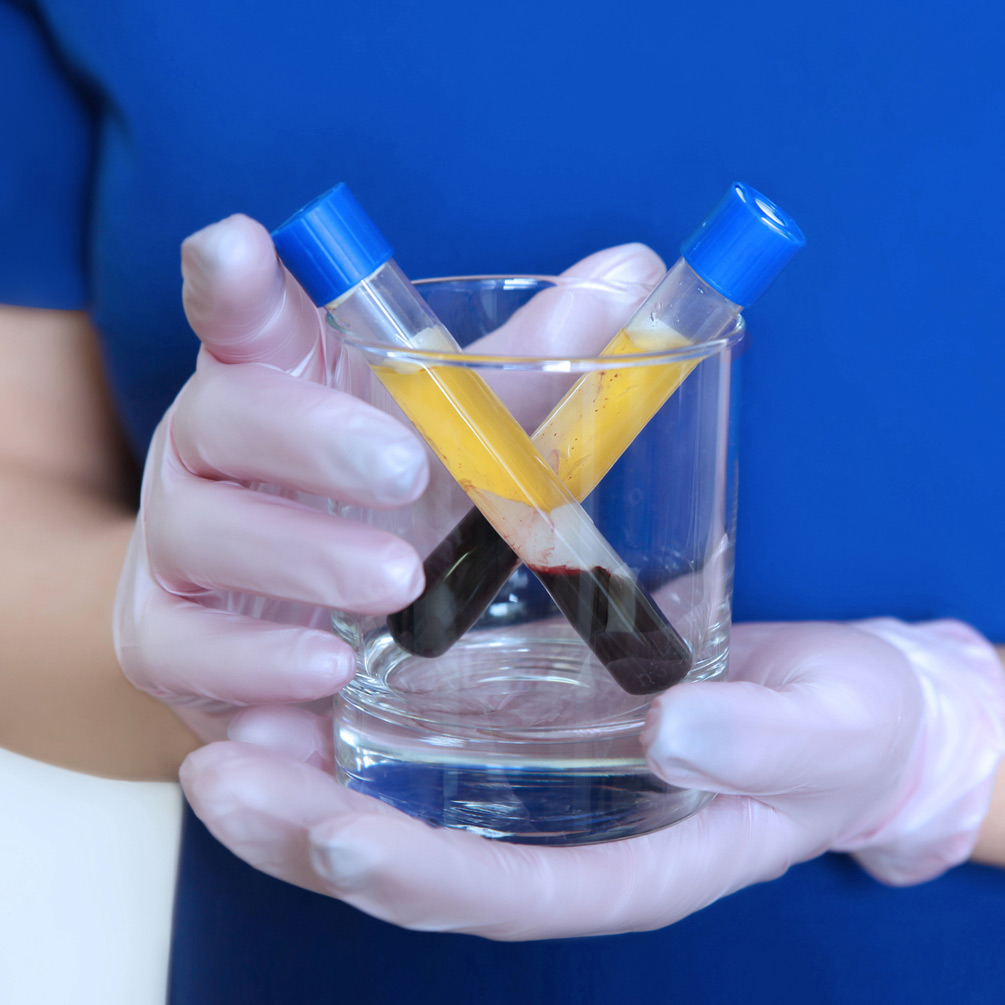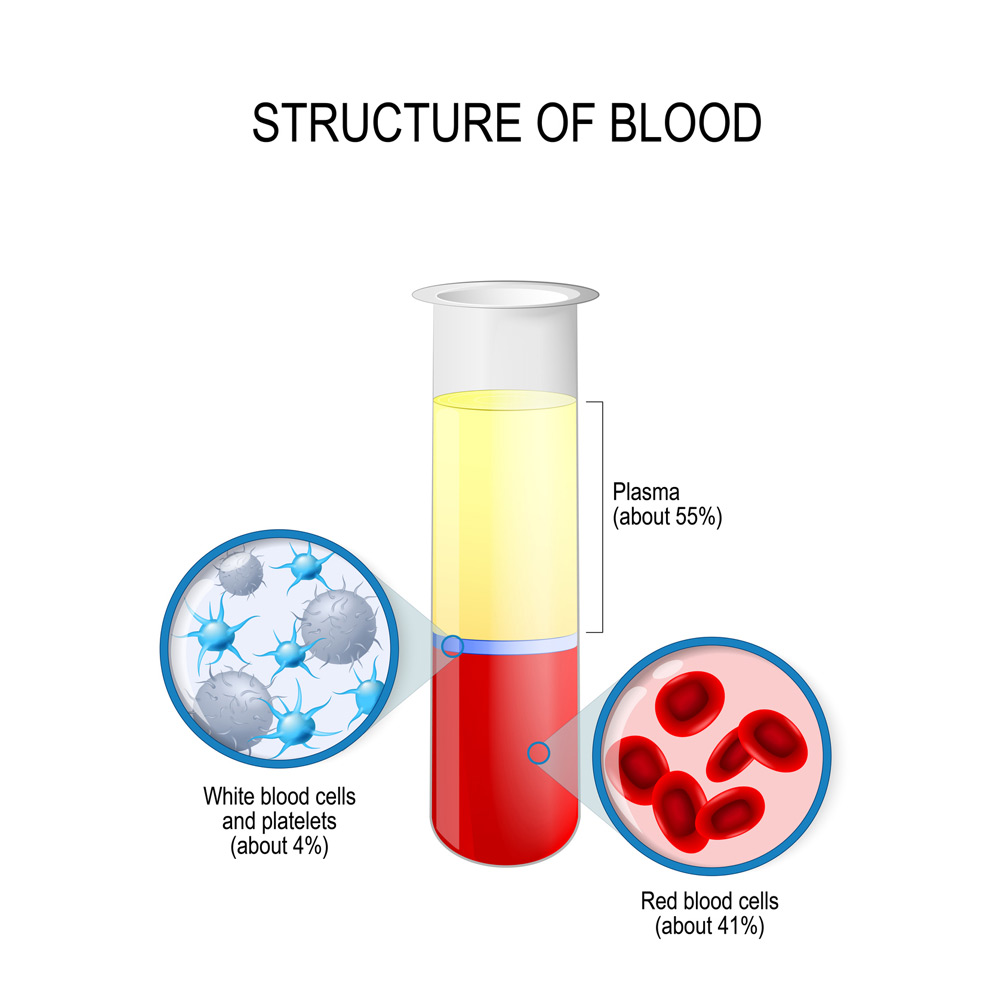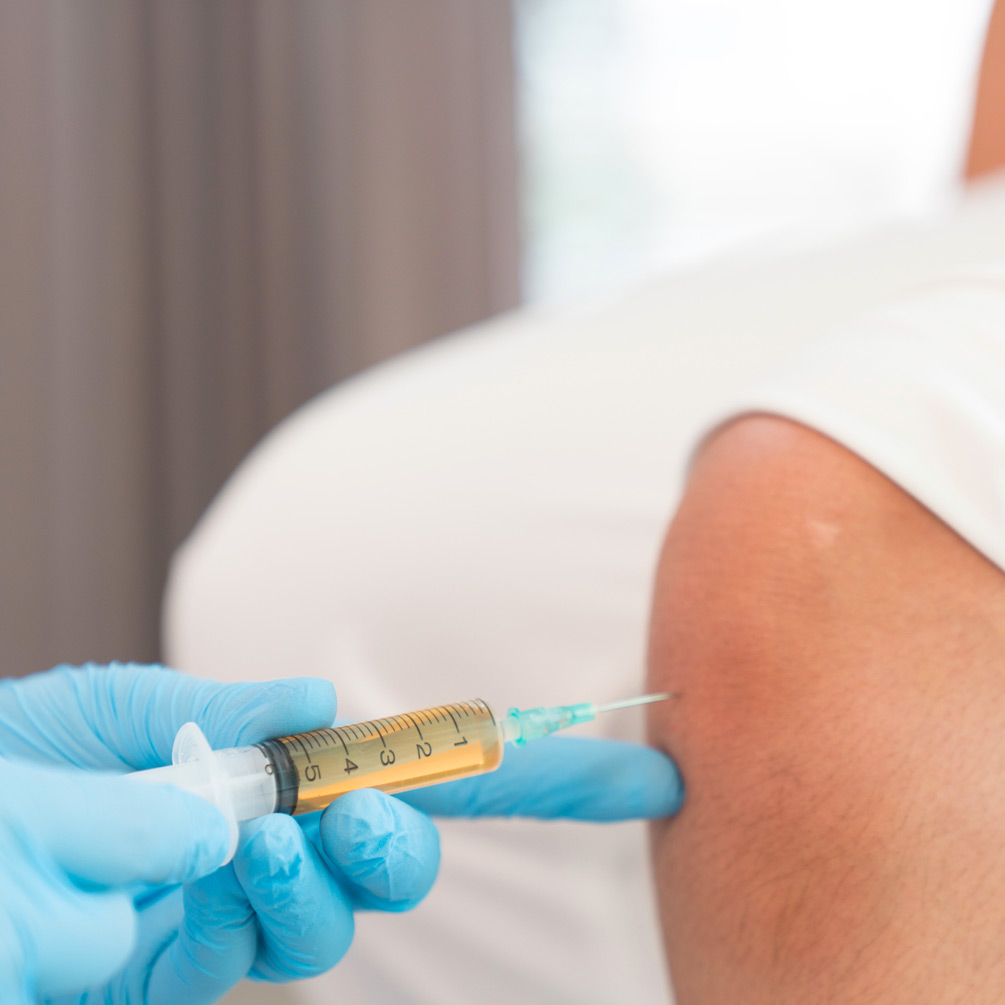
Knee arthritis is a very common condition, affecting around half of the population.
Although it most commonly manifests in elderly people, it can also affect middle-aged and younger people. The primary symptoms are pain, swelling, and stiffness, and in more advanced forms there may be significant impairment of knee function. Treatment options are not very effective and primarily revolve around pain medications and physical therapy. Severe cases are treated with joint replacement. PRP injections are a relatively new option for treating knee arthritis.
PRP Injection in Knee
Platelet-rich plasma (PRP) is prepared from the patient’s own blood. A normal blood sample is collected and subjected to centrifugation in a quick, in-office procedure. The concentrated platelets are collected and injected into the knee. Platelets are formed elements found in the blood; their primary role in the body is to repair damage. They contain a highly concentrated cocktail of blood clotting factors, growth factors, and cytokines. They actively seek out sites of damage and then release their contents. The growth factors induce the chondrocytes to proliferate and secrete extracellular matrix proteins that form new cartilage, while the cytokines attract stem cells to the site to differentiate into new chondrocytes. The compounds released by the platelets also inhibit inflammatory reactions in the local area.


PRP Injection in Knee: The Evidence
Although the use of PRP injections to treat knee arthritis is a fairly recent innovation, PRP has been used for decades to treat a wide variety of conditions such as tendonitis and to speed healing after surgery to repair a torn ACL. One published study randomized arthritic knees to receive either a placebo injection or PRP injections. Six weeks after the injections, the PRP group had less pain, less stiffness, and improved knee function, and these results were maintained for at least six months. Another published study followed patients with MRI after receiving PRP injections. Normally, around five percent of the cartilage degrades per year in an arthritic knee, but in the knees given PRP injections the cartilage remained the same, with no progression, for up to a year after the injection.
PRP Injection in Knee: The Procedure
The entire injection procedure only takes around 30 minutes. A blood sample is taken from an arm vein and while the PRP is prepared a numbing cream is applied to the knee. Then, the PRP is simply injected into the knee joint. Most patients report the treatment is not painful but there may be a feeling of fullness and some minor aching for a day or two. The effect of the PRP injection knee takes a few weeks to gradually become established, reaching its peak around six weeks after the injection. Some people only need one PRP injection while others need two PRP injections two months apart to relieve their symptoms. Most people find their symptomatic relief lasts for six to 12 months, after which another injection is usually necessary to maintain the desired results.

